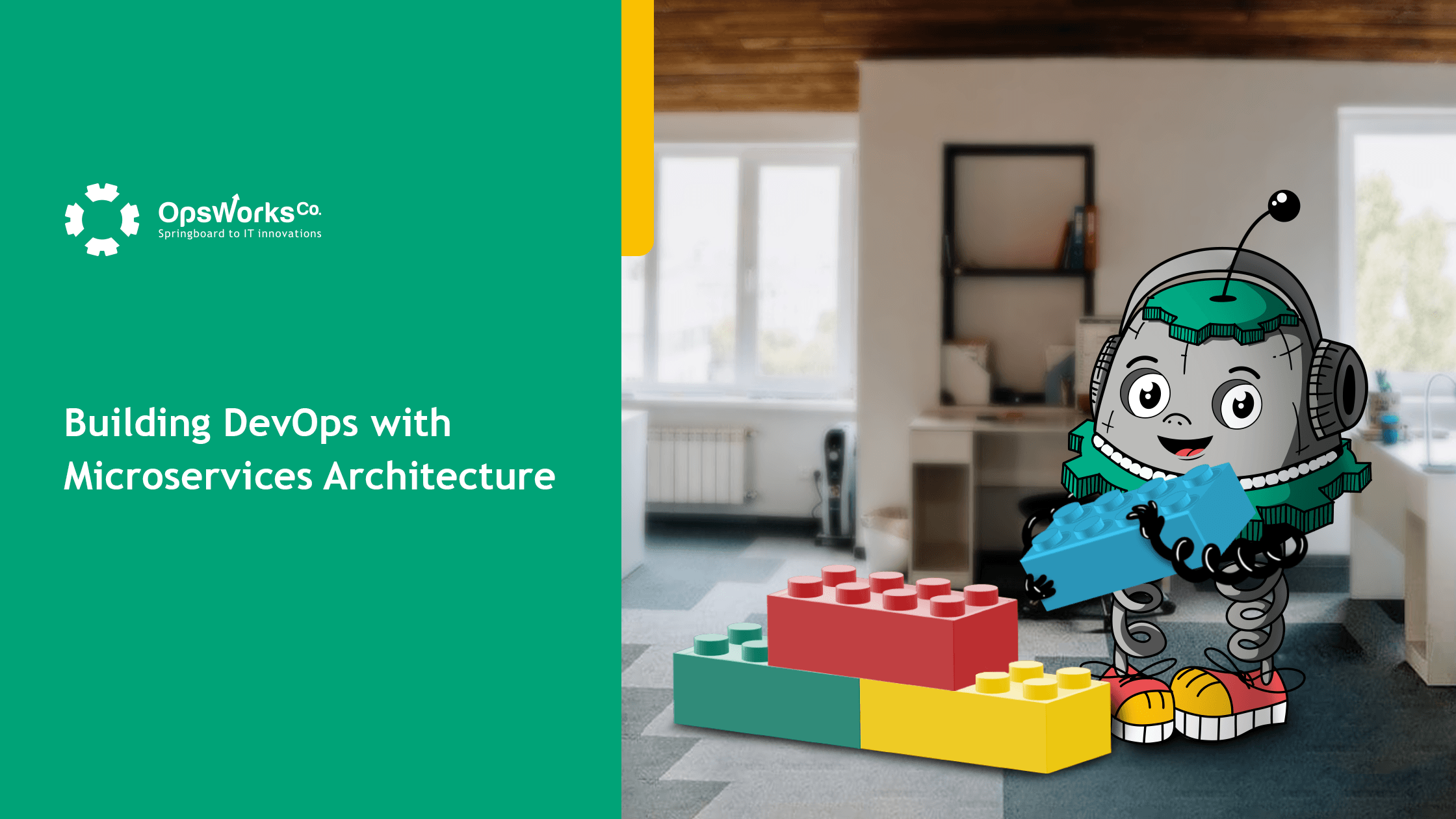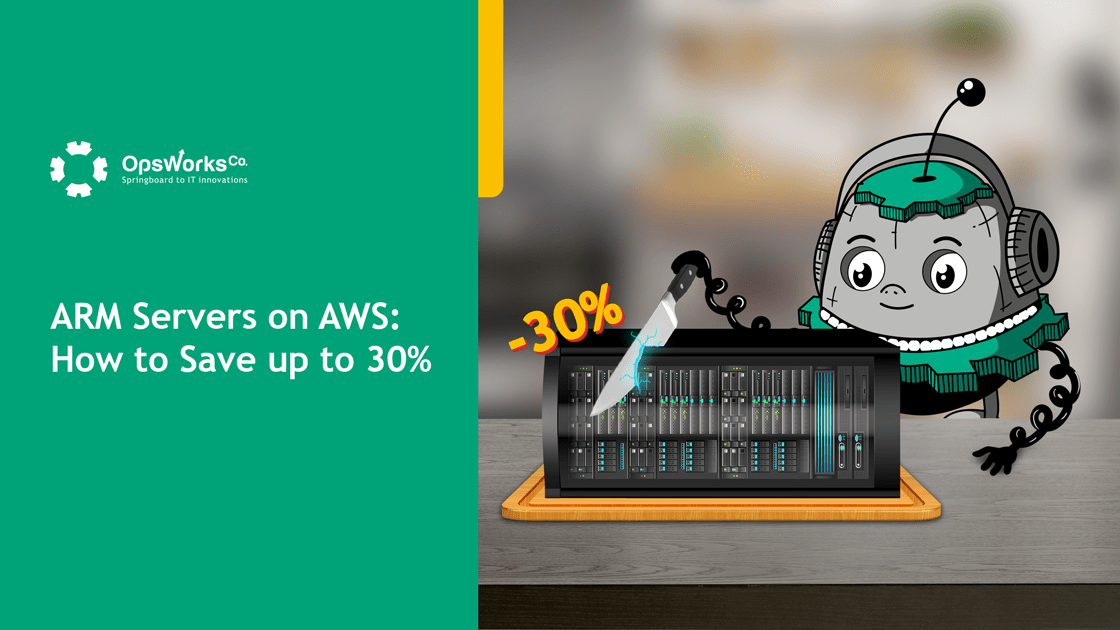
No conversation about cloud-native software architectures is complete without mentioning microservices. Along with DevOps, microservices architectures are one of the hottest practices in the enterprise, characterized by their specific approach to designing software applications in a way that allows them to be deployed as independent services.
In fact, both DevOps and microservices offer superior agility and operational efficiency, for the simple reason that DevOps and microservice excellence are joined by the hip in many ways.
But as with any new standard or technology, there are bound to be growing pains. While the increase in the number of developers embracing microservices architectures has also led to an increase in high-quality content, there are also misconceptions about what microservices really are. Case in point: some people genuinely believe that building microservices is simply about making application packages smaller.
Technically there is no single standard or style that defines what microservices architectures are. Most people, however, will agree that the microservice approach is a way of building a single application to contain a group of smaller, independent services, each one running its own unique processes and communicating through lightweight mechanisms to achieve a predefined business goal.
An easy way to understand microservices architecture is to look at its software design counterpart: monolithic architecture. Unlike microservices, monolith applications are designed and built as a single, independent unit. Placed in a client-service environment, the server-side application is a monolith program that takes care of:
• Processing HTTP requests
• Executing logic
• Retrieving and updating data in the database
Monolithic architectures are often held back by the fact that their change cycles are typically tied to each other. This means that modifying a small part of the application will often force developers to build and deploy a completely new version. This makes it harder to scale specific features and components of an application that would actually benefit your enterprise, forcing you to scale the entire application from the ground up.
Applications based on the microservice approach have loosely coupled services that only interact with each other through APIs. In addition, these services are smaller and less complex, focusing on one functionality tied to an enterprise goal of the application.
In other words, instead of building a large codebase for a single application, ala monolith style, the application compromises multiple services with individual codebases managed by smaller, more agile dev teams. Depending on the business goals of the project we decompose them into the technical tasks that are later approved by the client.
The preparation stage includes an onboarding call during which we introduce an engineering team to the client, determine project methodology, and approve a communication list. After the call, the client has to grant us necessary access, and we create communication channels for intersite interaction.

In turn, this lets organizations develop, deploy, and update specific components of their applications in a faster and more focused way. It also adds an element of flexibility to their development processes, making it easier to:
• Scale according to demand
• Adapt to changing market requirements
• Adapt to changing competition in a quick and agile manner
Examples of major services that use microservices architectures include Amazon, Netflix, and PayPal, all of which have used the approach to break down one complicated problem into many smaller, easier-to-solve ones.
Advantages of microservices architectures, now that we know that deployment speed and agility comprise the appeal of microservices, it’s time to take a closer look at what makes this possible. To prepare for the realization stage, we decompose the high-level tasks and set time and resource estimates that are later approved by the client. After the tasks are agreed upon, we prioritize them according to the client’s needs or a logical flow.
The active stage of implementation includes weekly status calls, estimate updates, and recommendations.
Rapid application of simple bug fixes and patches, adding a single field to an already-deployed application, and changing a specific service component are just a few of the many things you can do with microservice-based architectures. With a decentralized system of maintaining and upgrading applications, you have fewer instances of system downtimes, faster release deployment, and an agile landscape.
With a large monolithic application, even the simplest changes can be difficult to deploy, often requiring the suspension of the entire system—this is especially common when applying bug fixes.
This is due to the fact that monolithic applications are normally built and run as one entire application, which means that any testing or changes must result in a new build to prevent any adjustments from breaking other components. This also means that any new build would have to be re-deployed as one unit, along with all its other untouched components.
In a microservice-based application, developers would only need to update and deploy the specific service/s requiring an update or critical bug fix—this is, of course, assuming the application’s services are loosely coupled.
More importantly, any changes made to a service can be rolled back without causing any downtime. This makes it easier and faster for even the largest of applications to stay agile and roll out updates rapidly and more frequently.
If, for example, Netflix still used monolithic architecture today, any tweaks and fixes the site’s developers would make—whether on a login component, a library bug, or a database issue—could cause the whole site to go offline, potentially resulting in hundreds of thousands of lost revenues per minute.
But in reality, all Netflix’s developers need to do to make changes to their microservices architecture is to fix a few lines of code, all without disrupting the front-end interface of the service.
Ease of Scaling
Cloud-based applications are normally scaled by adding more machines, or instances. What basically happens is that more machine instances—each one with an application instance—are created, with load balancing applied across all instances.
The problem with a monolithic application is that even if you were to scale just one feature or component of the application, the entire application would have to be scaled out, requiring the addition of unnecessary machine instances. This translates to higher scaling costs and a less-efficient scaling process when compared to microservices architectures.
In a microservice application, developers can scale each service as they see fit and deploy the services to instances that are best suited for their resource requirements. For example, if increased demand is straining the order service, developers can simply scale it out without having to touch the other services that make up the application. If the profile service needs more memory, it can then be deployed with instances that have a lot of memory.
Of course, developers can still deploy multiple services across the same instances, but microservices architectures offer a more resource- and cost-efficient way to scale deployments.
Multiple Technology Stacks and Protection Against Inconsistent Dependencies
Most monolithic applications are developed using one programming language and technology stack—usually a very specific stack version. The problem with this approach is that for one component of the application to reap the rewards of a newer version of the technology stack, the other components of the application must be able to support it first.
This, however, is not always the case, which results in the monolithic application being slow to update to the modern features brought about by a new stack version. In contrast, the microservice approach takes advantage of the independent service structure, with each service using different frameworks, framework versions, libraries, and even operating system platforms.
This level of customization allows sysadmins to select the best technology for their service component and needs, all while avoiding conflicts between stack versions, features, and libraries.
For example, let’s assume a microservices application has a profile service, an order service, and a frontend service.
• The profile service can be implemented in Java and leverage search engine features from Elasticsearch.
• The order service might use Node.js together with Oracle database to leverage its strong reporting features and consistency.
• It’s even possible to use different versions of one language or stack across your application services without causing any dependency conflicts.
Integration with DevOps
Advanced automation, monitoring, and DevOps are key components of microservices operations. In most development teams, releases happen once a month, with each release requiring careful planning and frequent release meetings.
But in an agile world that demands swiftness when reacting to software bugs, customer demand, feedback, and market requirements, development teams cannot afford to settle for monthly releases.
This is where automation—a core principle of microservices DevOps practices—comes in. But by automating your DevOps pipeline, you need to ensure your service meets your quality standards. In turn, this calls for comprehensive testing in every stage of the release pipeline, which just so happens to be perfect for microservices architectures.
Microservices architectures allow development teams to test while in production, while DevOps provides the necessary functionality to monitor and detect anomalies and issues rapidly and apply bug fixes or rollback to previous versions as needed.
We’ve already established that microservices architectures bring about changes that make the lives of those tasked to develop modern applications easier.
Companies that have embraced microservices are reaping the rewards of increased productivity, rapid deployment, and flexible, more scalable applications.
We also know that DevOps breaks down the boundaries between Development and Operations, creating a rapid and automated process that allows for the fastest possible development and deployment of software. DevOps teams are composed of development and operations engineers who work hand in hand throughout the software lifecycle, from the design and the development stages, to support.
On their own, each practice revolves around the same principles: creating an agile and efficient environment for any enterprise. But bringing the two together is when the fun truly happens, offering huge benefits on all aspects of operations, from the IT infrastructure itself to how business decisions.
For example, Amazon engineers use a combination of microservices and DevOps to deploy lines of code every 11 seconds or so, ensuring that the incidence and duration of downtimes are kept low. Likewise, Netflix engineers deploy code thousands of times a day.
At the heart of any tech or software company is a universal goal: to release high-quality products frequently and predictably to satisfy—even exceed—the expectations and needs of customers.
This is pretty much what you get when joining microservices and DevOps principles. For DevOps teams, microservices offer many significant advantages, such as:
DevOps and Microservices Empower Small, Autonomous Teams
While centralization enables one group of engineers or developers to decide on the tools, technology stack, and standards to be used and followed by an organization, this seemingly streamlined approach (at least on paper) to reducing overhead and redundancy can actually lead to stagnation and low morale caused by micromanagement. Teams become bored and afraid to experiment because they think their ideas are against company policy.
Organizations that wish to continue driving innovation must be willing to delegate and empower small, independent teams, giving them the space to be able to think, experiment, and deploy at their own pace and style.
This is one of the many things that microservices architectures bring to the table. The approach of doing one thing well and deploying it to many services breaks free from the practice of designing monolith applications that are basically multiple services jammed into one program.
The decomposing of monoliths gives rise to smaller microservices, which also dissolves the large and often slow-to-act team in charge of maintaining the application, into smaller and more agile teams.
And because microservices are arranged according to varying business features and goals, they can be developed using different programming languages or different versions of one language. What’s important is for there to be clearly-defined interfaces that govern the interaction between each microservice. This allows the smaller teams to have the autonomy to select their desired standards and metrics, all while adhering to the organization’s overall key performance indicators instead of the other way around.
In addition, decentralizing applications and teams match the core principles of the DevOps methodology, helping narrow the gap between:
• The user interface, backend, and middle-tier developers, who tend to work in isolation
• Development, security, business, production management, and operations teams, who also usually work in their own silos
Bottom line? Both microservices architectures and DevOps lean toward the product model instead of the project model, the latter of which often has a small group of 5 to 7 developers and engineers shouldering the gargantuan task of designing, building, testing, monitoring, and maintaining an application across the entire application cycle.
Modularized Services Can be Released as Autonomously Deployed Artifacts
Many organizations depend on building and implementing resilient Continuous Development (CD) pipelines that allow them to:
• Conduct feature and configuration experiments in a safe, contained, and secure manner
• Recover from problems and failures quickly without disrupting the application experience for customers
A fixture of many DevOps setups, CD pipelines are fully automated solutions that support independently deployable versions of artifacts across development, testing, and production. These pipelines have a low tolerance for slow and awkward handoffs between silos. Handoffs are considered easily one of the most wasteful aspects of any project, turning it into a series of inefficient discrete steps.
If the project is assembled using multiple subsystems that can only be released as a monolith, the system’s structural integrity is dangerously dependent on the integrity of its individual parts. In contrast, DevOps projects based on microservices architectures feature a suite of services with clearly defined boundaries. Not only that, these projects are continuous flow from start to finish, minimizing handoffs, dependency conflicts, and more.
In most cases, each microservice functions as an autonomous and deployable versioned artifact that supports a linear pipeline structure. As mentioned earlier, each modularized service is built around a specific business goal, released to have independent functions. By being free to work without the help of neighboring services, each modular service can support team velocity and development productivity. The compartmentalization of services also lets faster teams pull ahead without having to wait on the slower ones to finish.
Of course, this is not to say that monolithic applications can’t be successful. But given the modularity of microservices and their ability to fuel more frequent releases in incremental batches, there’s no reason not to leverage them. This is just one of the many examples of DevOps and microservices complementing each other to improve an organization’s scalability.
Improved Test Cycle Times and Time to market
In today’s highly competitive landscape, organizations are always keen to outmaneuver their competitors, or at the very least, keep up with them. And so, they try to construct sustainable business models that support the rapid deployment and reduced shelf time of new ideas in a sustainable manner (i.e. without being too exhausting for their teams).
This is technically possible to accomplish with clunky monoliths, but the likelihood of that happening is much lower than with modular microservices, especially when it comes to testing. Here’s why:
• Monolith tests are normally designed and implemented to require a long stretch of time, during which the development team will have probably churned several times.
• Monoliths aren’t conducive to parallel individual testing because test cases, data, and configurations in monolithic applications are not normally designed for idempotent and independent execution.
• Every new release of the application inflates the list of test cases, which can lead to the cluttered archiving of old tests, often involving old features that are no longer present in Production. This can cause a great deal of uncertainty in the test archival process as it often means no single person completely familiar with the system architecture.
Each release of the monolith executes a new test case that ensures the clunky monolith does not regress. Not surprisingly, this exponentially bogs down the organization’s test cycle time—the testing time required to decide whether to roll out or stop the new release. This also affects the lead time for fulfilling software requirements, which in turn, negatively impacts the time to market for new software features and releases.
The granular nature of microservices means that tests are released to Production through autonomously deployed (versioned) artifacts that have been validated separately.
Microservices communicate with one another to generate specific use cases, requiring smarter integration tests. And even during integration tests, neighboring services are typically represented by test doubles with clearly-defined contracts, allowing the small teams who own and maintain their real counterparts to have the freedom to test and experiment as they see fit.
Microservices Best Practices and Mistakes to Avoid
However, despite the benefits of using microservices in a DevOps environment, there are a number of important issues to remember and practices to avoid.

Although the combination of DevOps and microservices has the potential to yield tremendous benefits to organizations and their teams, enterprises should still invest in a platform strategy to ensure everyone in Development and Operations can take advantage of these technologies.
A platform strategy doesn’t necessarily just refer to any underlying hardware and operating system/s. It also involves all software application developers build and run on, including the OS, cloud technologies, storage, and middleware framework. Setting up a platform also ensures that your microservices have an established base to scale out from without straining the organization.
In addition, the automation of tests, the delivery pipeline (for continuous flow), provisioning, and cloud sandboxes, help speed up the production process.
Bottom line? The evolution of microservices architectures and DevOps in the enterprise only helps organizations achieve their objectives and goals, all while staying ahead (or keeping up) with their competitors. Microservices and DevOps perfectly complement each other, speed up adoption, and encourage experimentation—things any business can benefit from.





